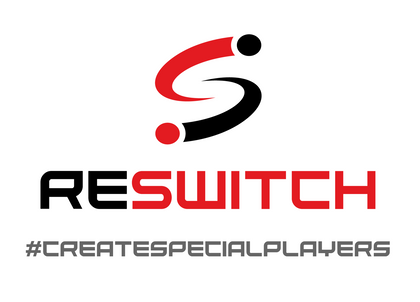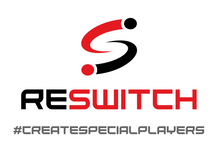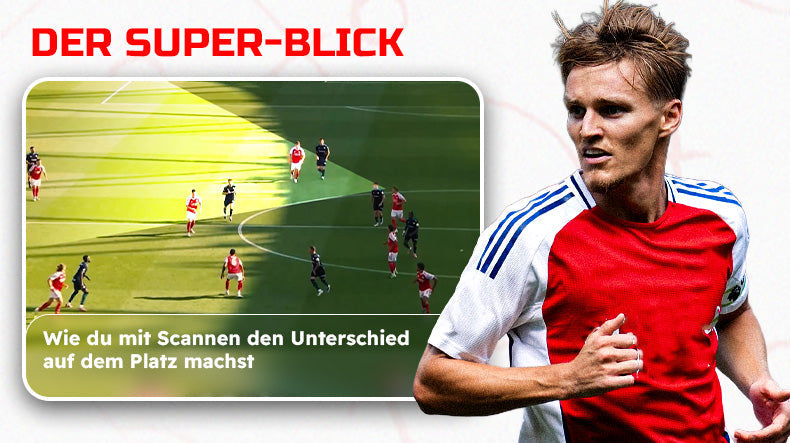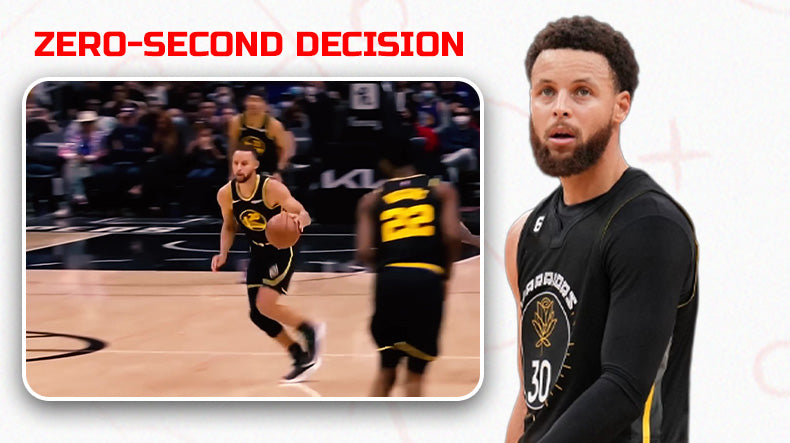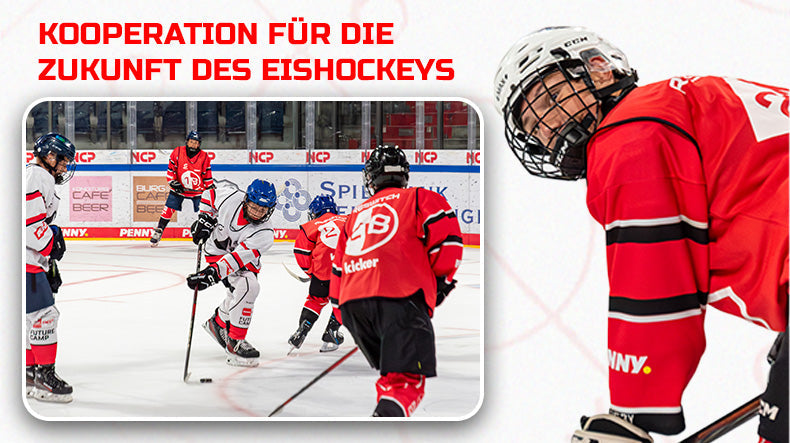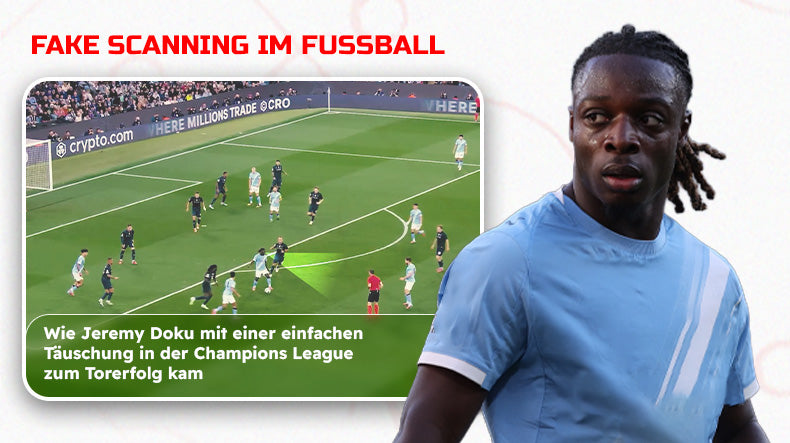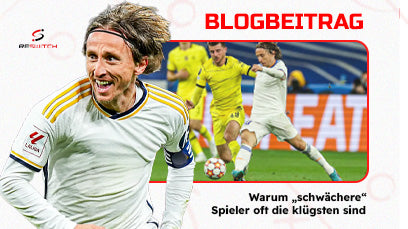Train your perception
Better perception
The player must first understand a situation correctly in order to be able to react to it as well as possible. On the one hand, it is important to recognize patterns and, on the other hand, to perceive them as precisely as possible. For example, shooting accuracy increases when the gaze is focused on the target. And feints in penalty shootouts have less of an impact on the goalkeeper if he concentrates on the moment of foot-ball contact instead of the run-up.
Exercise: Shadow dribbling
- There are always pairs of two. Both have a ball at their feet. The person in front of the two players starts dribbling and can change the direction of running, juggle, feint or increase the pace as they wish. The other player must try to react as quickly as possible to the movements of the person in front and imitate them.
RESWITCH exercise: dribbling fever
- Each player wears a RESWITCH jersey and has a ball at their feet. All players dribble through the field using a given dribbling technique. The trainer gives a new category (“number”,…) at certain intervals. The players who are now dribbling towards each other in the field look at the shirts of the other players. For example, if they have the same number on their shirt when the coach commands “numbers”, they do a stepover and if, for example, one player wears 1 and the other player wears 2, they do scissors. Through additional perception tasks, you can also incorporate the side where the feint should be made into the exercise.
Peripheral perception
In addition, information from the side field of vision also plays an important role. If there is a free player on the periphery, this perceptual ability can lead to significantly better decision-making behavior. Broad perception can be trained very well, especially in games.
RESWITCH exercise: RESWITCH 3gg3 + Joker
- Free RESWITCH game in the FUNINO field. The joker always plays together with the team in possession of the ball, creating a 4v3 majority
Faster perception
In addition, in many situations it is important to assess the situation as quickly as possible. Speed of perception is achieved above all when processes can be automated.
Exercise: Variant shot on goal
- A player starts at a command from the coach, who also shows the player a color. The player is now given the task of dribbling around 5 cones of the indicated color in a forest of cones as quickly as possible. He then dribbles towards the goal and is shown a second color by the coach and then has to finish in a specific zone in the goal depending on the color.
RESWITCH exercise: dribbling duel

There are always two players facing each other. On one side there is a blue zone (unequal) about 10m away and on the other side there is also a target zone at the same distance (equal) marked by cones. The coach now calls different body parts that the players have to touch with their hands as quickly as possible. After any number of announcements, the trainer calls out a category (e.g. color). If the categories of the opposing players are the same, the players dribble into the zone (same) as quickly as possible and shoot for the mini goals. If the categories are unequal, the player dribbles to the blue goal-scoring zone and finishes. It is also possible for one of the two players to demonstrate the movement and the other player to copy it as quickly as possible. For example, if player 1 touches his right knee, player 2 must do the same.
At older ages, rondos in narrow spaces are particularly suitable for perceptual training. The players have to perceive the ball and at the same time the space and the players around them, which automatically trains their peripheral vision.
Coaching tip! Try to avoid commands such as “Don’t pay attention to the goalkeeper” during a penalty kick, as the player’s attention is automatically drawn to the goalkeeper. Supportive coaching such as: “Pay attention to the free corners” is much more effective here. In addition, in exercises with a pure technical focus, it is important to ask the players to look away from the ball early on in order to perceive their surroundings.
General tools for your toolbox in perception training:
- Reaction to colors of hats, camisoles
- Use arms: The right arm represents a specific action and the left arm represents a specific action
- Displaying a certain number of fingers (three fingers shown = climber,…). In addition, displaying numbers is suitable, especially in pure technique training, to require players to take their eyes off the ball. For example, during an exercise they have to regularly look at the trainer and announce the number he is showing.
- Play with different colored balls, which represent different tasks. For example, red balls can only be played with the right hand and blue balls can only be played with the left.
Author: Jonas Kumpan
